Further to BACSA member Andrew Whitehead’s recent post on the project at St Mary’s Cemetery Ground, Chennai, we are delighted to hear from Sravani Naraparaju, architect and conservator, that the very challenging, much-needed work on the Anderson Monument has now been completed.
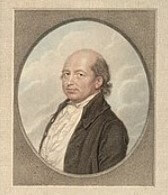
Engraving by Luigi Schiavonetti c.1795
The aim of this phase of the project was to conserve the monument and re-lay the approach pathways, while adhering to heritage policies and guidelines in maintaining the original fabric and structural elements. The work was carried out by Jeernodhar Conservators, Pvt Ltd, with the expert guidance of our Area Representative for Tamil Nadu, Ravindra Gundu Rao.
Born near Edinburgh in 1738, Dr James Anderson joined the East India Company and became surgeon-general of Madras in 1781. Interested in medicinal plants and horticulture, he set up a botanical garden, where he introduced mulberry trees and experimented with making silk. He also introduced other plants of commercial value, including sugar cane, coffee, American cotton and European apples.
Anderson died in 1809. The monument at St Mary’s Cemetery, Madras, was erected by his 24-year old nephew Andrew Berry, as a tribute to ‘the best of uncles’, who was ‘the most distinguished physician on the Coromandel coast’.
In 1945 Julius James Cotton recorded in his ‘List of Inscriptions on Tombs or Monuments in Madras possessing historical or archaeological interest’, that the name Anderson appears ‘on the four corners of the dome, in Tamil, Telugu, Hindustani and English characters’.
In addition to the tombstone, inscribed with Berry’s lengthy, fulsome Latin tribute to his uncle, the stone-clad brick monument originally sheltered two items (a bust of Anderson, and a ‘patent magnifying glass’), both of which disappeared several decades ago.
Paths to the area had become overgrown with bushes, making it largely inaccessible. The structure itself had been badly damaged by vegetation growing in and around the masonry, which was dislodging the brickwork, displacing the steps and cracking the inscribed tombstone. Parts of two tree trunks had insinuated themselves between the brick masonry and the stone cladding, becoming integral to the monument structure and rendering their physical removal impossible (without destroying the monument). BACSA Executive Committee chose instead to limit further growth by cutting back leaves and branches, believing that this will slow down the deterioration, and the monument will survive for many years to come.
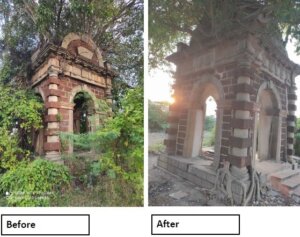
The old plasterwork was removed, loose bricks were replaced and plaster applied. Loose pointing between the stone surfaces was replaced; displaced stones in the base and pediment were relaid, and the gaps filled with coarse lime mortar. Stones missing from the steps were replaced with material of similar nature, colour and texture.
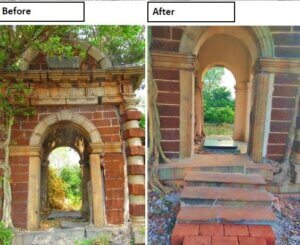
The inscribed gravestone
The flooring round the gravestone was cleared, and laid with Kadapa stone, to facilitate access. Missing portions of the inscribed stone were replaced with stone of similar appearance and texture, and the cracks were grouted. Finally, a flat glass roof with lead flashing was installed above the monument, to prevent further ingress of water and inhibit plant growth.

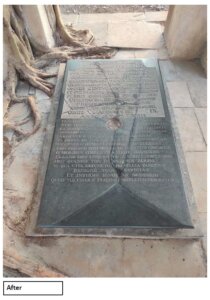
Transcribed in full in Cotton’s List, the inscription on Anderson’s tomb reads:

Translated into English by BACSA Chairman Paul Dean, this becomes:

Anderson is also commemorated in St George’s Cathedral, Madras, where his colleagues in the Madras Medical Department erected a ‘wonderfully lifelike and natural’ statue of him (by Chantrey), which was subsequently positioned by the west doorway of the Cathedral.
Anderson’s daughter, Ann Anderson Young (a widow), died, aged 33, in 1810, and was buried at St Mary’s Cemetery. Once again, her cousin Andrew (‘Andreas’) Berry took care of the burial arrangements.
Pathway to the monument
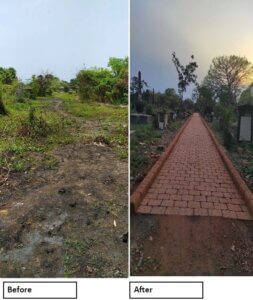
After the pathways had been cleared of invasive vegetation, they were laid with laterite blocks and rounded edge kerbing, to ‘connect’ the monument with the entrance gate.
All in all, a very impressive piece of conservation work, which has made the monument accessible again and will hopefully keep the structure safe for many years to come.
Rachel Magowan
(Suggestions for BACSA website news items are always welcome – please send them to ‘comms@bacsa.org.uk’.)
